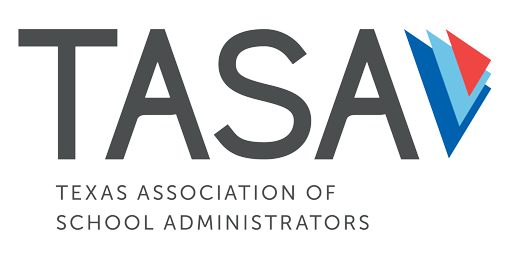On August 11, 2023, the Texas House Select Committee on Education Opportunity and Enrichment released its initial interim report to the 88th Texas Legislature.
The committee made a host of recommendations in response to its three charges:
Charge 1: Ensuring all Texas youths enjoy equal educational opportunity and the freedom to obtain a quality education, regardless of circumstance
Recommendations:
- Continue identifying opportunities to scale and improve public school choice through the availability of specialized schools, STEM Academies, Career and Technical Education, Early College High Schools, etc., ensuring parents have ample choice in their children’s education.
- Implement proposed recommendations from the Texas Commission on Virtual Education.
- Implement the proposed recommendations from the Texas Commission on Special Education Funding. (TASA Note: Recommendation 14 in that report is to “Consider Educational Savings Accounts.”)
- The Legislature should consider addressing intra- and inter-transfer policy including charging of tuition for transfer students.
- If the Legislature chooses to enact a parental choice program, it should clearly outline student eligibility to ensure success and target certain student populations to ensure that each program participant is assessed to make apparent academic outcomes. The program should prioritize high need students. The program should include appropriate safeguards to ensure fiscal responsibility and accountability including, but not limited to, a finite appropriation to fund the program using General Revenue funds and not funds from Foundation School Program. Ultimately, the program needs to value the best interest of the student, parent and taxpayer, preserving the quality of education.
- An additional parental choice option worthy of consideration includes legislation to allow the Comptroller to select a Certified Educational Assistance Organization to administer a fund that would be used for parents and students to apply for scholarships or education expense assistance, funded by private sector funds, no state money, by offering credits on insurance premium taxes for contributions. Contributions would also provide for federal tax deductions.
- Consider expanding learning opportunities through community-based learning centers.
Charge 2: Improving outcomes for Texas public school students and meaningfully supporting educators and educational institutions
Recommendations:
Student and Parent Supports
- Increase the Basic Allotment to ensure LEAs have sufficient operating funds to offset the rising cost of inflation, which can be used to compensate teachers and provide increased resources for students in Texas.
- The Legislature should consider addressing parent/guardian rights regarding the local grievance process similar to HB 890 and HB 3315 of the 88th Regular Session.
- Empower parents with reliable information about their child’s reading progress and high quality resources that can be used at home.
- Promote early literacy foundations through rapid interventions when students in early grades show signs of low proficiency through policies contained within HB 2162 (88R).
- Provide diagnostic instruments for schools to monitor a student’s development of foundational literacy skills in Kindergarten through third grade.
- The Legislature should consider offering grants to help districts pay for innovative parental engagement efforts.
- Consider additional funding for organizations on campus that provide resources for chronically absent, truant, and at risk students.
Teacher Recruitment, Retention and Supports
- Implement recommendations of the Teacher Vacancy Task Force to address critical vacancies and support the educator workforce to meet state needs. Specifically: a. Expand TIA to more teachers through the establishment of a fourth designation tier and the creation of a grant program to help increase participating districts; b. Create a sustainable, affordable Teacher Residency Program and allotment to increase the pipeline of diverse teachers receiving strong, on-the-job preparation; c. Waive certification costs for hard-to-fill teacher fields such as bilingual or special education. Additionally, waive certification and fee costs for first time teacher applicants; and d. Provide children of teachers with access to free Pre-K.
- Eliminate the TRS Retire/Rehire surcharge imposed on districts for retired teachers to return to the classroom or fill other support staff vacancies.
- Provide greater public transparency and data regarding the implementation of the Science of Teaching Reading.
- Require a percentage of a school district’s increase to the Basic Allotment be used to provide wage increases for support staff.
- Direct TEA to collect more disaggregated data than is currently available on teacher vacancies and class sizes, and should conduct an independent time study. The teacher time study should include the impact of large class sizes and student behaviors on the learning environment, discipline issues, and working conditions, particularly in school districts with high rates of student mobility and educationally disadvantaged students. The study should engage with educators directly to learn about the prevalence of duplicative data entry and unnecessary paperwork that take time away from teaching.
- Direct TEA to annually promote the teacher profession and its value.
Classroom Discipline
Supporting teachers in their efforts to manage student behavior, perhaps through reforming policies about allowing teachers to remove from the classroom students with especially problematic behavior and the return of those students to the classroom, as was in SB 9 (88R), and through training and technical assistance for districts about strategies school leaders can use to set effective behavior expectations, as was in HB 11 (88R) and HB 100 (88R) as passed by the Senate.
Property Tax
Consider how recent property tax legislation (SB 2, 88(2)) impacts school finance and County Appraisal District processes and explore possibilities for ensuring fair practices across districts related to State and local property value assessment. This should include a thorough examination of the state’s property value appraisal system, specifically the Property Value Study (PVS), and its impact on local school districts.
School Finance
- Strategically adjust key school finance allotments and funding streams as outlined in proposals passed with bipartisan and bicameral support during the Regular Session to provide targeted resources for improving student outcomes, including: a. Adding pre-K students to the Early Education Allotment to support the availability of quality early learning; b. Removing barriers to implementation in public-private Pre-K partnerships; c. Modifying Additional Day School Year baseline calendars to 175 days, rather than 180; and d. Increasing the weights provided in the Compensatory Education Allotment.
- Consider establishing an Average Daily Attendance (ADA) floor for school districts. An ADA floor would help set funding expectations as well as protect district funding against unexpected circumstances, such as natural disasters or statewide emergencies, projected decline in enrollment, student departures, and student mobility across districts.
- Appropriate additional funds to support school safety implementation to meet requirements from HB 3 (88R) and guidance issued by TEA in 2022.
- Consider allowing ISD Board of Trustees to access additional Tier 2 Golden Pennies.
Charge 3: Modernizing assessment and accountability measures for Texas schools educating K-12 students
Recommendations:
- Allocate technical assistance grant funds to support the development of Local Accountability Systems and identify potential valid and reliable metrics to include in elementary and middle grade campuses.
- Consider requiring TEA to deliver an annual report on TTAP’s effectiveness rather than waiting until 2026 to review findings. A report should include TTAP’s ability to reduce the quantity of high stakes testing.
- The Legislature should consider reforms that make the assessment results better tools for parents to actually understand which and how much of the TEKS their child has mastered.
- Establish a predictable cycle for the adjustment of CCMR cut scores to better align and prepare LEAs. Alignment should include “what/if” models.
- Define chronic absenteeism in the Texas Education Code. Add chronic absenteeism to the “at risk” category to better support students who are chronically absent and therefore at risk of dropping out. Require that TEA annually aggregate and report chronic absenteeism as well as truancy to increase transparency and better target student supports.
- Modify Resource Campus qualifications and requirements so more campuses can participate and benefit from additional targeted funding to improve outcomes.
Statements from several committee members who either disagreed with some recommendations or wanted to add clarification to their positions on certain recommendations are included at the end of the report. Rep. Gina Hinojosa’s letter explains why she did not sign the report.

